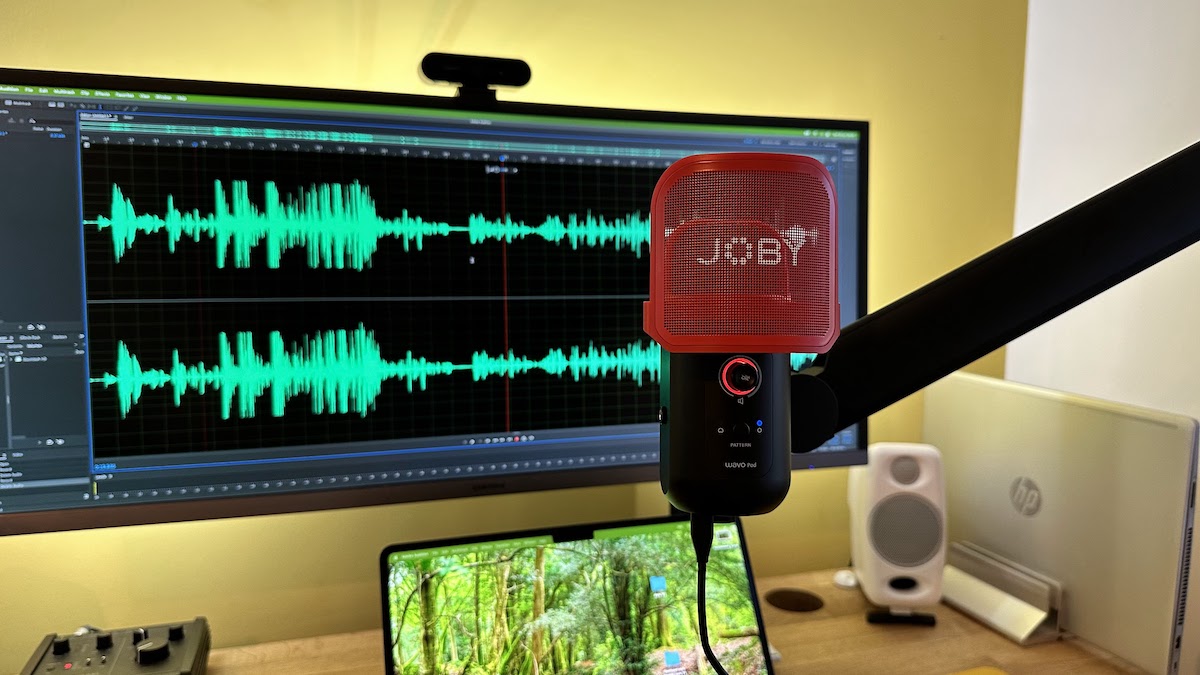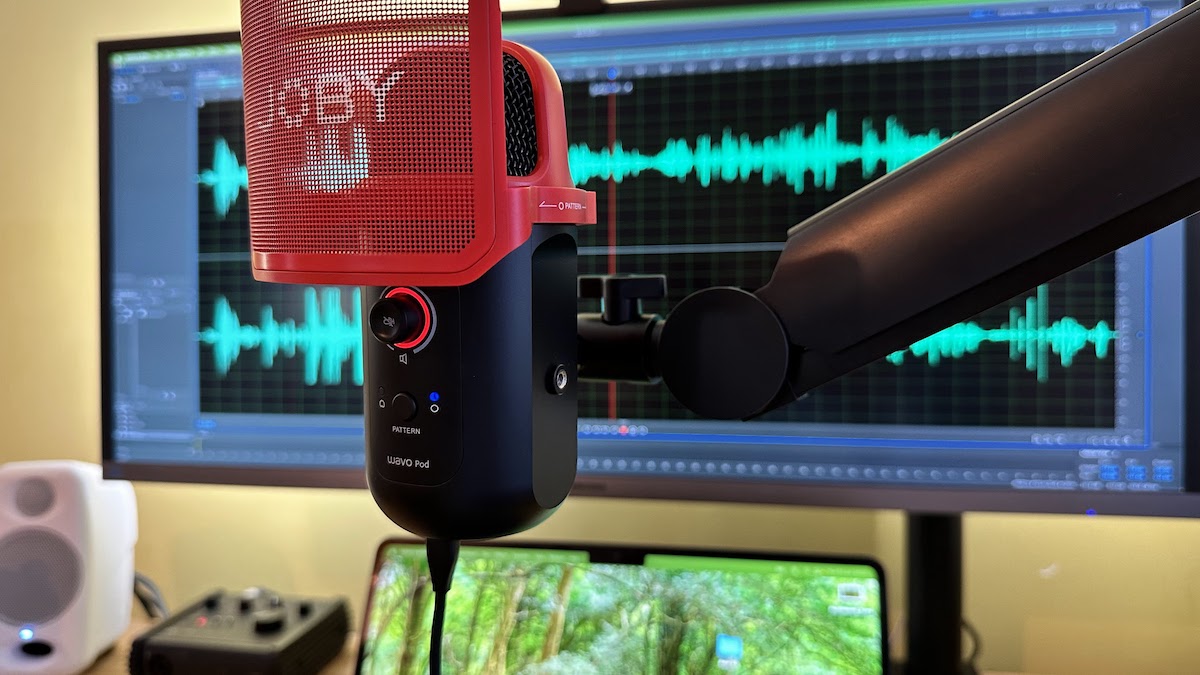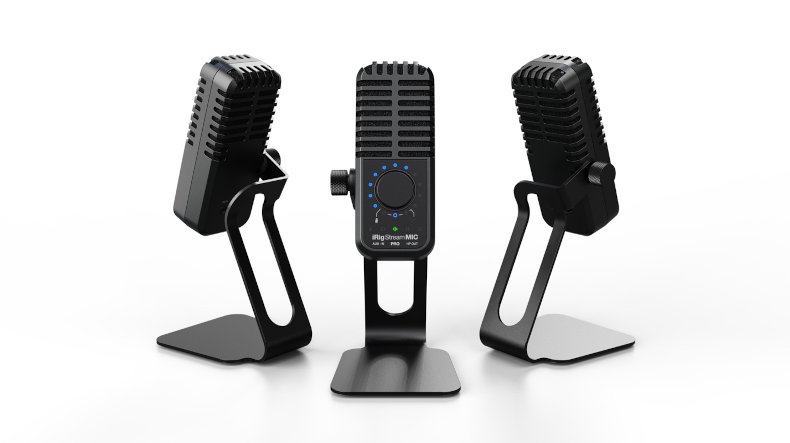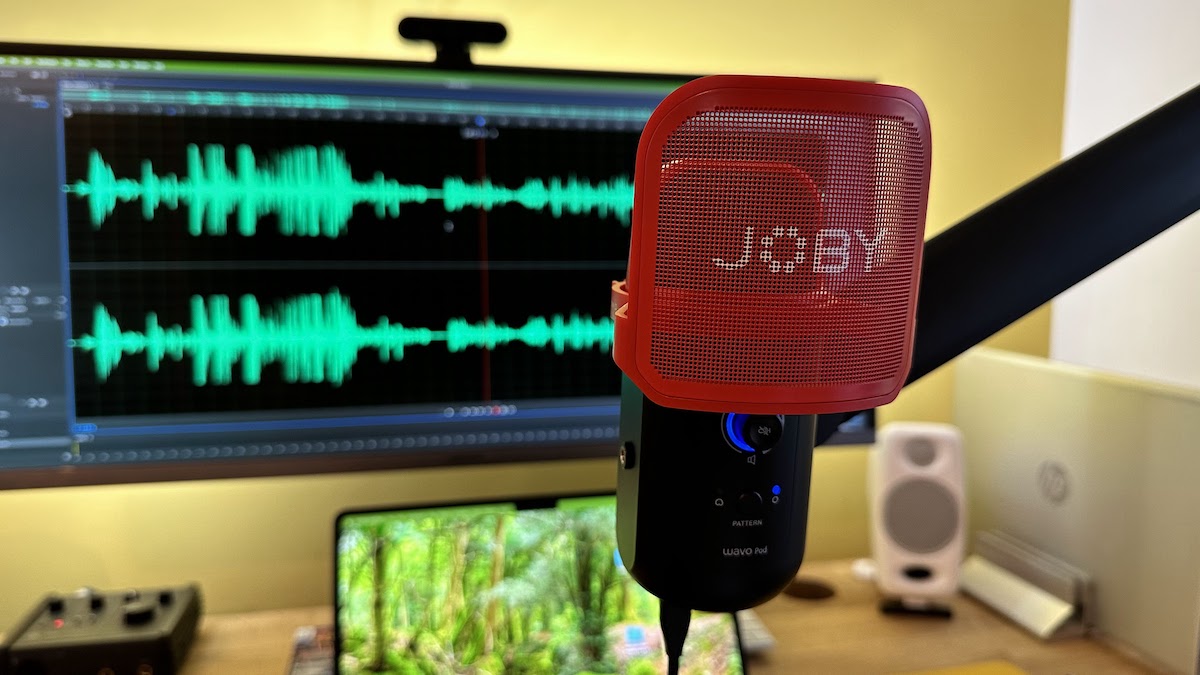
Joby Wavo Pod review: What is it?
If you’ve ever dabbled in videography then you’ll likely be familiar with Joby, probably on account of its insanely useful Gorillapod range of bendy camera tripods. With the Wavo Pod, Joby is adding to its line-up of content creation tools with a relatively inexpensive USB microphone aimed squarely at the desks and home studios of podcasters, vloggers and streamers. But does the world need another sub $/£100 budget USB microphone?
Thankfully, the Wavo Pod immediately seems a cut above the usual. A few times while setting the mic up I had to re-check the price because the whole experience is a lot more premium than I’d anticipated it would be. But a sleek brand and a premium unboxing does not a quality microphone make. No, we needed to put the Wavo Pod through its paces in a couple of different environments to see if it really was as good as first impressions suggested it could be.
First things first though. The Joby Wavo Pod is a desktop USB condenser microphone, with a couple of neat tricks to increase its usability. It features two different pickup patterns, meaning it can thrive both as a solo user mic and as one you can place in the middle of a table to capture a group. Like all the best USB mics, it can carry out basic audio interface tasks thanks to its onboard headphone output and on-mic controls over gain and volume. Is it any good though? Let’s take a look.
Joby Wavo Pod review: Performance & verdict

The acid test with any USB microphone is that you can plug it in and instantly begin using it. The Wavo Pod passed this test with flying colours, which meant I could instantly start testing its aural capabilities in Audition. Now, to be clear, we’re not expecting life-changing audio colour or elite audio quality; the Joby and its immediate competition are meant to be used by non-audio professionals, to execute a task simply and efficiently. At this, the Wavo Pod performed perfectly well.

Blue Yeti
Rode NT-USB
IK Multimedia iRig Stream Mic Pro
Naturally, given its target user, speech and vocal capture work best with a highly usable frequency response - albeit lacking a touch in the low end. We did find when we used it without the plastic pop filter that sibilance became an issue, so you’ll need to factor this in. In general, the Wavo Pod’s speech capture was crisp, clear, and about as good as you’d expect at this price point. Bonus points for the on-mic headphone output, meaning you can simply monitor your audio before it hits the recording software so there are no nasty surprises when you come to edit it later.
The Wavo Pod’s speech capture was crisp, clear, and about as good as you’d expect at this price point
Design-wise, the Wavo Pod is a cut above its peers. The mic itself is plastic - no surprises, given the price - but it feels reasonably high quality. It possibly wouldn’t stand up to the rigours of field recording, but as a studio mic, it’s perfectly robust. We like the way Joby included multiple screw mounts onto the mic itself, and its stand, so you can access a variety of ways to place the microphone during use. For the purposes of testing the Wavo Pod, Joby also lent us its complementary (but sold separately) boom arm and the same traits of neat design and rigid build quality were apparent here too. It even had a drinks holder. Nice!

One thing that I wasn’t so keen on was the dual-use button, which controls the input gain and the volume, depending on which setting you have active. These can be identified thanks to colour-coded LEDs, which look great, but the button itself can be a touch fiddly and I’m not convinced how it would stand the test of time. That’s the only design downside on the Wavo Pod, which otherwise looks and feels like a much more expensive piece of equipment.
As we’ve alluded to, there is no shortage of inexpensive USB microphones on the market today. Brands like Shure and Audio-Technica dominate, as you’d expect, but the Wavo Pod shows there’s still room for innovation if you know where to look.
Joby Wavo Pod review: Hands-on demos
KitGuruTech
David Walsh Online
Proper Honest Tech
Joby Wavo Pod review: Specification
- Type: Condenser
- Sample rate: 48kHz
- Bit depth: 24-bit
- Frequency range: 20Hz to 20kHz
- Polar pattern: Cardioid and omnidirectional
- Connectivity: USB-C & headphone out
- Controls: Multifunction volume/gain control
- Contact: Joby







